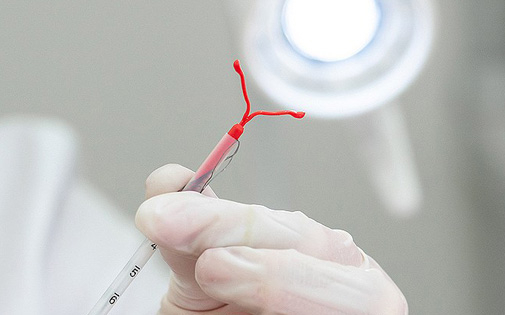For appointment and information, you can rich us on +90532 433 6003(whatsapp)
 Obstetrician, Gynecologist, Genital Esthetic Surgeon in Turkey
Obstetrician, Gynecologist, Genital Esthetic Surgeon in TurkeyFor appointment and information, you can rich us on +90532 433 6003(whatsapp)
 Obstetrician, Gynecologist, Genital Esthetic Surgeon in Turkey
Obstetrician, Gynecologist, Genital Esthetic Surgeon in Turkey
An intrauterine device (IUD) is a long acting reversible method of contraception that can be used by all women regardless of age and parity.
It is usually composed of a small intrauterine plastic part produced in various shapes and two strings which stay outside the cervix and are used to pull out the IUD when it needs to be removed.
It may have either copper or progestin hormone on the plastic part for contraception.
There are mainly two types of IUD’S:
IUD is one of the most effective contraceptive methods that can be used by female patients.Chance of getting pregnant with an IUD in place is less than one per thousand.That is why additional contraceptive methods are not necessary.However you still need to use condoms to be protected against sexually transmitted diseases.
Intrauterine Device (IUD) is the most effective method of emergency contraception. Its efficiency is much higher than the morning-after pills. After unprotected intercourse or condom tears, an IUD should be inserted as soon as possible as a method of emergency contraception.
When a cupper Intrauterine Device (IUD) is inserted within 5 days of unprotected intercourse, its efficacy is more than 99 %. In addition patients can choose to keep on using the Intrauterine Device (IUD) as a contraceptive method in future.
An IUD can simply be inserted through the cervix during a gynecological examination. But rarely local anesthesia or sedation may be necessary for patients with a low threshold for pain.
Every woman can use an IUD for contraception regardless of their age and parity. Adolescent and nulliparous patients (women who have not delivered before) can use an IUD. Only during an acute pelvic infection, it is not recommended to insert an IUD.
A cupper Intrauterine Device (IUD) can be used for 5-10 years depending on its type. Hormonal IUD can be used for 5 years.
Insertion of an Intrauterine Device (IUD) is a simple procedure that takes less than one minute under normal circumstances. Rarely in complicated cases or for cases that necessitate anesthesia, the procedure may take longer.
It is possible to have intercourse right away after insertion of an IUD. Its protective effect starts right away after insertion.
You can get pregnant right away after IUD removal. IUD is a reversible method of contraception and there is no time period necessary to wait after IUD removal to get pregnant.
The side effects of cupper Intrauterine Device (IUD) are increased menstrual bleeding and pain.
The side effects of hormonal Intrauterine Device (IUD) can be summarised as breast tenderness, headache, mood changes, edema and intermenstrual bleeding or spotting.
There may be no signs or symptoms when and IUD is dislocated or expelled from the uterus. Therefore it is recommended to have regular controls by ultrasonography. Rarely sudden heavy bleeding or pain may accompany IUD dislocation. It is also rarely poosible to see the expelled IUD on panty liners or underwear.
An IUD may be rejected by the uterus because it is a foreign body.In that case it may be expelled from the uterus by contractions.
The most common reason that pregnancy happens with an Intrauterine Device (IUD) is because it is dislocated or expelled from the uterus. This is a very rare condition, however it must be regularly controlled just to make sure that it is correctly placed.
For most patients, Intrauterine Device (IUD) insertion gives slight crampy pain similar to menstrual cramps. However it may be more painful very rarely in patients with a low threshold for pain or in nulliparous or perimenopausal patients with a narrow cervix that needs to be dilated.
You can have an IUD inserted preferably during your menstruation. However if you are not menstruating you can have an IUD inserted anytime as long as you are sure that you are not pregnant.
It is not possible to feel the presence of an Intrauterine Device (IUD) either during daily life or during sexual activity.
Usually the partners cannot feel the Intrauterine Device (IUD) during sexual intercourse. Very rarely the IUD’s strings may be felt by partners and it is possible to cut the strings shorter in this case by your gynecologist.
The cost of having an Intrauterine Device (IUD) inserted may change from clinic to clinic. It also depends on the IUD type and whether sedation is used.